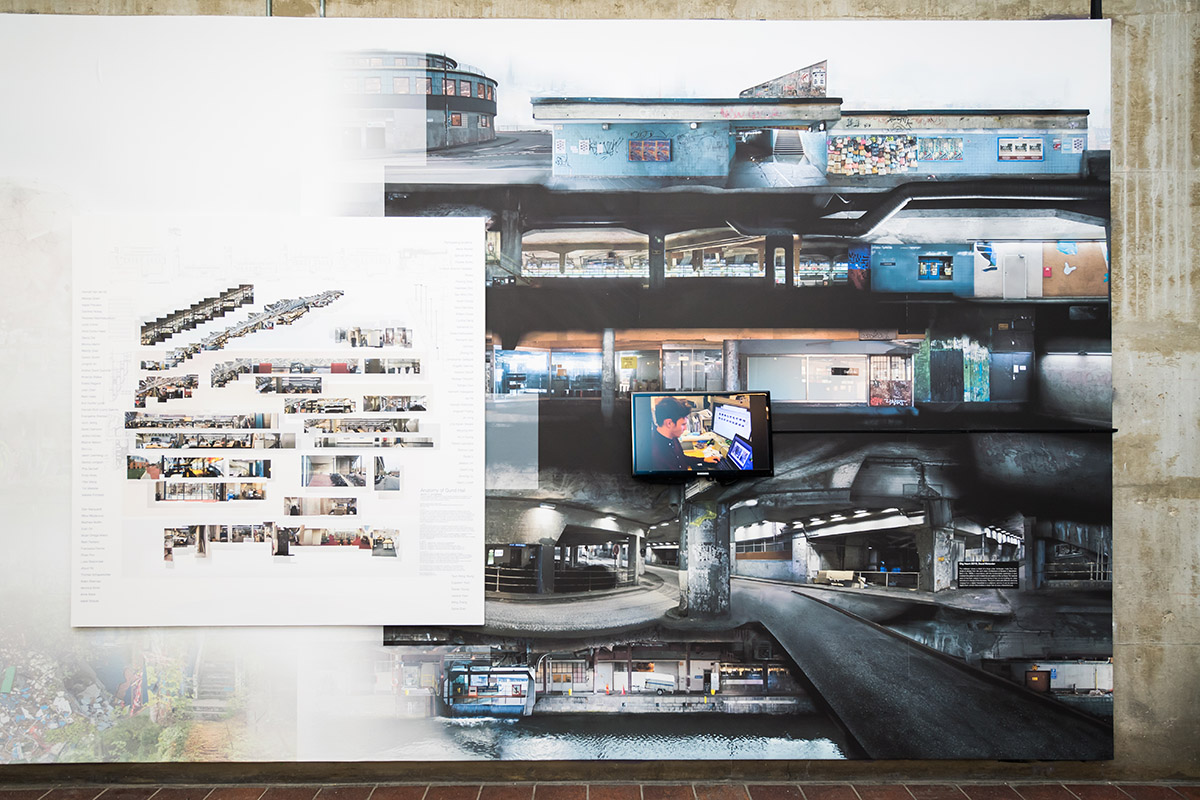Anatomy of Gund Hall

Anatomy of Gund Hall was developed in conjunction with the Sensory Media Workshop conducted by artist David Molander (Loeb Fellow ’17) on September 30, 2016.
What?
In this workshop, the students will be creating a photographic mapping of Gund Hall. Photography is used as the medium during this workshop and it aims at reflecting upon conditions of embodiment and spatial dislocation of familiar spaces, such as meeting rooms, the trays, library, Chauhaus, offices, the back and front yard, etc. Each group of students will be assigned a spatial segment at Gund Hall—a section of the building with the adjacent landscape—to photograph and to montage with Photoshop according to certain protocols as described by the artist. By the end of this workshop, each group will have a composite image as representative of the assigned section.
How?
During the process of identifying the corresponding section/space in Gund to be photographed, the students must “highlight” or isolate a particular spatial characteristic of the section under scrutiny. Spatial characteristics should come from observation of specific features that have captured the attention of the group, such as texture, depth, color, artifacts, recurrent structures, patterns, geometry, etc. While each group will be producing one or two composite images of a segment of Gund, David Molander will subsequently stitch the work into a single large composite. This will be exhibited later on one of the exhibition walls at the GSD first as a work in progress than as a complete work.
- a) Tasks:
Student #1 – Takes photos + Show-and-Tell representative
Student #2 – Holds the map & annotates necessary info
Student #3 – Documents work of #1 and #2 via photos and/or video
Student #4 – Photoshop / stitching the photos into a single composite (1 /2)
Student #5 – Photoshop / stitching the photos into a single composite (1 /2)
The Artist
David Molander works with digital photo and film collages and animation. He collects documentary material of spaces and environments, consisting of hundreds of photos and film clips that he dissects and reconstructs into large still or moving images. Molander cuts open interiors, samples streetlights, stitches together pavements and gathers parts of the city that, although closely linked, seldom meet. His work puts emphasis on new relationships between architecture, social environment, communication, spatiality, living memory, and the humans within it. “I’m interested in how the visual traces of a location—colors and textures, can be linked to history, ideologies and cognitive space, sometimes with a social agenda or critical interpretation. My interest often takes me to areas where utopia/dystopia get intertwined, where paradoxes and contrasts meet.”